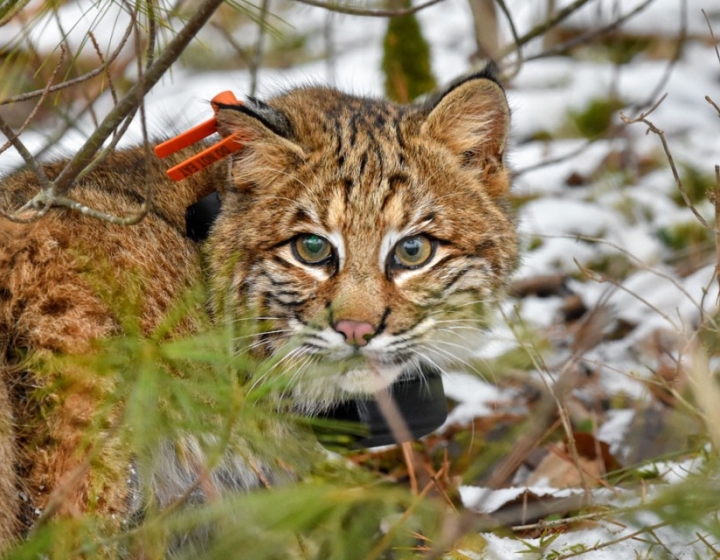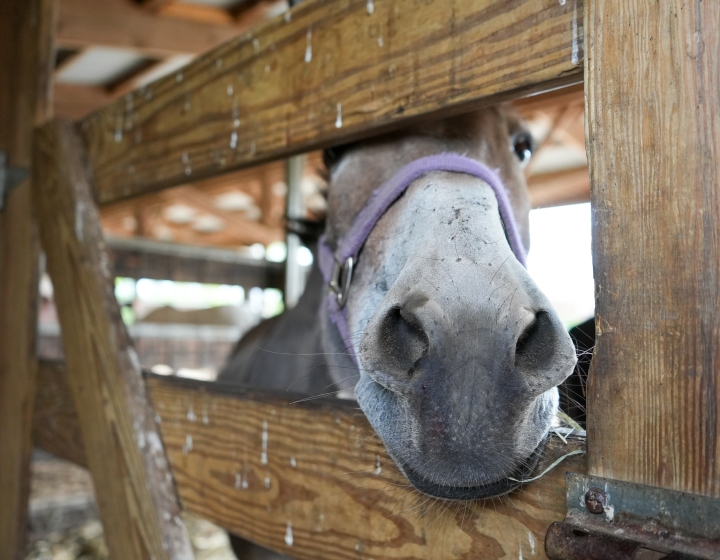New faculty profile: Dr. Sarah Caddy
The Cornell University College of Veterinary Medicine (CVM) has recently welcomed many new faculty members to our academic departments, each one bringing a unique set of skills and experience that enriches our college. In this Q&A series, you'll get to know their interests, expertise and more.

Dr. Sarah Caddy, assistant professor with the Baker Institute for Animal Health and in the Department of Microbiology and Immunology
Q: What has been your path leading up to Cornell?
A: I graduated from Cambridge Vet School in 2009 and spent a couple of years in mixed practice and emergency small animal practice in the United Kingdom. Whilst I really enjoyed clinical work, I was also fascinated by the potential of a research career, and so I started a virology Ph.D. at Imperial College London in 2011. After this, I spent a brief stint volunteering in a diagnostics lab in Sierra Leone during the Ebola crisis, and then I moved onto a postdoc at the Laboratory of Molecular Biology (LMB) in Cambridge. This gave me the expertise and inspiration to successfully apply for my own independent research funding from the Wellcome Trust. With this fellowship I have been a clinical research fellow in the Department of Medicine at the University of Cambridge and now I am excited to be crossing the Atlantic to continue my research at Cornell.
Q: What drew you to CVM?
A: The Cornell Leadership Program! I loved being part of the 2007 cohort of veterinary students. I was very lucky to be assigned a project within John Parker’s lab at the Baker Institute for Animal Health. I find it incredible that 15 years later I’m starting my own group here!
Q: What is your area of expertise?
A: I am intrigued by the many ways in which antibodies can interact with viruses. Despite antibodies being first described over a century ago, there is still a lot to uncover about how antibodies work. I am particularly interested in maternal antibodies, which are transferred from mother to infant in all mammalian species. It is amazing that these antibodies can be both protective against infection and yet inhibitory for vaccines at the same time.
Q: What drew you into this area? Any specific experiences, mentors or influences that helped guide you?
A: My first experience of virology research was as a summer student at the Baker Institute and I’ve been captivated by viruses ever since. I’m grateful to my Ph.D. supervisor Ian Goodfellow for allowing me to create a project from scratch and follow where it led — the resulting satisfaction from my very own discoveries has driven me forward ever since. Following this, my time as a postdoc at the LMB taught me that there is no question too big or too small to ask, and it was a pleasure to be part of the James lab for five years. I also owe a huge debt of gratitude to Ulrich Desselberger, who is still contributing so much to the field of rotaviruses despite being in his eighties. He is a very inspirational mentor and I am grateful for his ongoing support.
Q: What past professional work are you most proud of and why?
A: I was proud to discover the carbohydrate receptor for canine norovirus during my Ph.D. This is a relatively unknown virus, and it was exciting to be at the forefront of research into this virus at the time. I am also proud to have finally proven a link between intracellular antibodies and T-cell activation. This was my most challenging postdoctoral project and I’m very glad I was able to finally provide all the pieces of the longstanding puzzle!
Q: What about your work are you most excited for or proud of and why?
A: I am very excited about the new system I have developed for studying maternal antibodies. My mouse model of antibody interference and rotavirus vaccination will allow us to finally answer some of the biological questions that have remained a mystery for decades.
Q: What impacts or applications do you hope to see your work have on the world, on human, animal or planetary health?
A: Quite simply, new and improved vaccines to protect infants of different species. These might be vaccines that boost maternal antibody transfer, or vaccines that work in infants despite the presence of inhibitory maternal antibodies.
Q: What clinical or scientific questions are you looking to answer next or areas you plan to explore?
A: Alongside characterization of maternal antibody transfer and interference, I am interested in the relationship between antibodies and T-cells. My recent work has found that some antibodies can enhance antigen presentation of a mouse virus (LCMV) via the intracellular antibody receptor TRIM21. We predict that this phenomenon can occur during infections with other viruses, and we aim to uncover more molecular detail of this pathway. This may open up new vaccine strategies that focus on induction of T-cell immunity, which could be of particular benefit in infants with maternal antibodies.
Q: What’s something most people don’t know about you?
A: I spent most summer weekends as a teenager showing Ayrshire cattle at agricultural shows across the United Kingdom!
Q: What’s the best part of being a scientist?
A: I love that I get to learn new things all the time, whether it is a new technique, some long published knowledge or something cutting edge. It is a real privilege to be a scientist who is able to explore and discover things I’m fascinated by.
Q: What’s the most challenging part?
A: So much of research is like an iceberg — the successful things you see on the surface such as papers and awards are only a small fraction of all the things that didn’t go to plan! Whether it is failed experiments or unsuccessful grant applications, there can be a lot of frustration. You have got to weather all storms.
Q: What are the benefits of working at CVM? At Cornell?
A: I’m really looking forward to being at the heart of a veterinary community again. The training I have received in virology and immunology at non-veterinary institutions has been immensely valuable, and I’m delighted that I get to now use my expertise for the benefit of all species.




